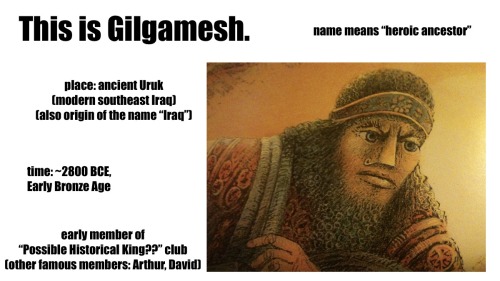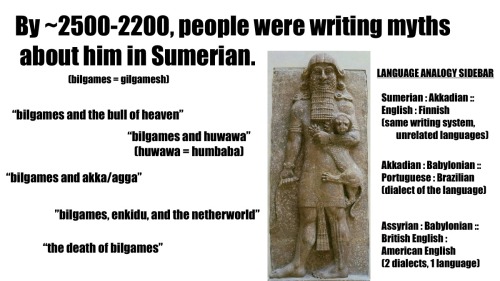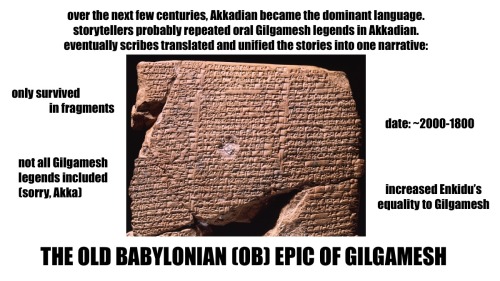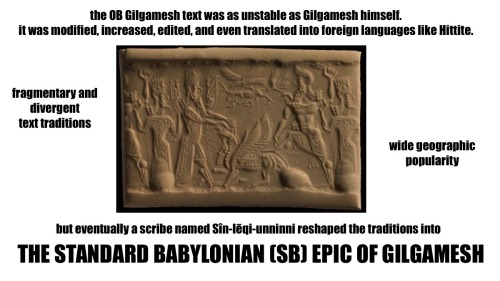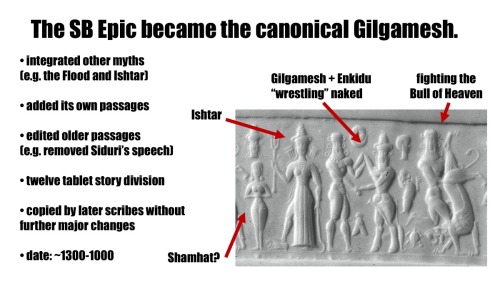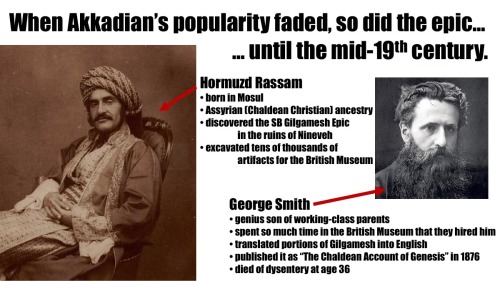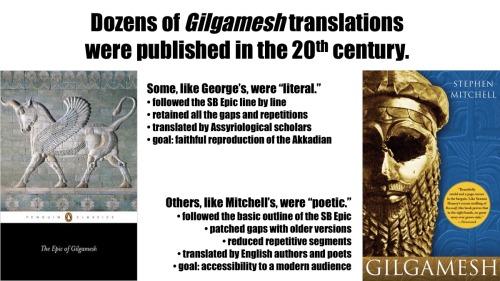The Roly Poly Pudding - Beatrix Potter










The Roly Poly Pudding - Beatrix Potter
First Edition - Second Printing 1908
[5500 copies Dec. 1908]
More Posts from Philosophical-amoeba and Others


On this day, 13th February 1743, Sir Joseph Banks was born.
Sir Joseph Banks was a British botanist and naturalist who sailed with Captain James Cook on the Endeavour voyage of 1770.
Joseph Banks was born on 13 February 1743 in London. His passion for botany began at school. From 1760 to 1763 he studied at Oxford University, during which time he inherited a considerable fortune. In 1766, Banks travelled to Newfoundland and Labrador, collecting plant and other specimens. The same year he was elected a fellow of the Royal Society.
In 1768, he joined the Society’s expedition, led by Captain James Cook, to explore the uncharted lands of the South Pacific. The expedition circumnavigated the globe and visited South America, Tahiti, New Zealand, Australia and Java. Banks collected an enormous number of specimens on the way and, on his return, his scientific account of the voyage and its discoveries sparked considerable interest across Europe.
The journal kept by the then 25-year-old Joseph Banks on board HMS Endeavour is one of the State Library’s most significant manuscripts. It records the first Pacific voyage of Captain James Cook from 1768 to 1771. Following the Endeavour’s return to England in 1771, Banks was hailed as a hero.
The State Library’s Sir Joseph Banks collection includes correspondence, reports, invoices, accounts, maps and watercolour drawings which document the far reaching influence of Banks on the colony. This significant archive containing over 7,000 pages has recently been digitised and now needs to be transcribed. Once fully transcribed the archive will be keyword searchable which will enhance discovery and access to the collection and increase the research potential in this significant archive.
Find out more about how to transcribe the Banks Papers
List of Free Science Books
Here’s an alphabetical list of all available free books. Note that many of the links will bring you to an external page, usually with more info about the book and the download links. Also, the links are updated as frequently as possible, however some of them might be broken. Broken links are constantly being fixed. In case you want to report a broken link, or a link that violates copyrights, use the contact form.
A
A Beginner’s Guide to Mathematica
A Brief Introduction to Particle Physics
A First Course in General Relativity
A New Astronomy
A No-Nonsense Introduction to General Relativity
A Popular History of Astronomy During the Nineteenth Century, Fourth Edition
A Review of General Chemistry
A Simple Guide to Backyard Astronomy
A Text Book for High School Students Studying Physics
A Tour of Triangle Geometry
About Life: Concepts in Modern Biology
Acoustic Emission
Adaptive Control
Advanced Calculus
Advanced Learning
Advanced Mathematics for Engineers
Advanced Microwave Circuits and Systems
Advanced Technologies
Advances in Computer Science and IT
Advances in Evolutionary Algorithms
Advances in Geoscience and Remote Sensing
Advances in Haptics
Advances in Human Computer Interaction
Age of Einstein
Aging by Design
AMPL: A Modeling Language for Mathematical Programming
An Introduction to Elementary Particles
An Introduction to Higher Mathematics
An Introduction to Many Worlds in Quantum Computation
An Introduction to Mathematical Reasoning
An Introduction to Mathematics
An Introduction to Proofs and the Mathematical Vernacular
An Introduction to Relativistic Quantum Mechanics
Analysis 1 (Tao T)
Analysis 2 (Tao T)
Analytic Functions
Astronomical Discovery
Astronomy for Amateurs
Astronomy Today
Astronomy with an Opera-Glass
Automation and Robotics
B
Basic Algebra, Topology and Differential Calculus
Basic Concepts of Mathematics
Basic Concepts of Thermodynamics
Basic Concepts of Thermodynamics Chapter 1
Basic Ideas in Chemistry
Basic Math: Quick Reference eBook
Basic Mathematics for Astronomy
Basic Physics
Basic Positional Astronomy
Basic Principles of Classical and Statistical Thermodynamics
Basic Principles of Physics
Basics of Physics
Beginner’s Botany
Biochemistry
Biochemistry (practice book)
Biology
Board Notes for Particle Physics
Book of Proof
C
Calculus
Calculus Based Physics
Celestial Navigation, Elementary Astronomy, Piloting
Circuit QED — Lecture Notes
Classical Dynamics
Classical Geometry
Classical Mechanics
Climate Models
Collaborative Statistics
College Algebra
Complex Analysis
Computational Geometry
Computational Introduction to Number Theory and Algebra
Computational Physics with Python
Conceptual Physics
Consistent Quantum Theory
Cook-Book Of Mathematics
College Physics
Crude Oil Emulsions- Composition Stability and Characterization
Curiosities of the Sky
D
Decoherence: Basic Concepts and Their Interpretation
Do We Really Understand Quantum Mechanics?
Differential Equations
Diophantine Analysis
Discover Physics
Dr. Donald Luttermoser’s Physics Notes
Dynamics and Relativity
E
Earthquake Research and Analysis
Earthquake-Resistant Structures – Design, Assessment and Rehabilitation
Einstein for Everyone
Electromagnetic Field Theory
Elementary Mathematical Astronomy
Elementary Linear Algebra
Elementary Particle Physics in a Nutshell
Elementary Particles in Physics
Elements of Astrophysics
Embedded Systems – Theory and Design Methodology
Encyclopaedia of Mathematics
Encyclopedia of Astrophysics
Engineering Mathematics 1
Engineering Mathematics with Tables
Essential Engineering Mathematics
Essential Physics
Exoplanet Observing for Amateurs
Experimental Particle Physics
F
Fields
Foundations of Nonstandard Analysis
Frequently Asked Questions about Calendars
Fundamental Concepts of Mathematics
Fundamentals of Analysis (Chen W.W.L)
Further Mathematical Methods
Fusion Physics
G
General Chemistry
General Relativity
General Relativity
Geometric Asymptotics
Geometry and Group Theory
Geometry and Topology
Geometry Formulas and Facts
Geometry Study Guide
Geometry, Topology and Physics
Geometry, Topology, Localization and Galois Symmetry
Great Astronomers
H
Handbook of Formulae and Physical Constants
High School Mathematics Extensions
Higher Mathematics for Engineers and Physicists
History of Astronomy
Homeomorphisms in Analysis
How to Use Experimental Data to Compute the Probability of Your Theory
I
Intelligent Systems
Intrinsic Geometry of Surfaces
Introduction to Astronomy and Cosmology
Introduction to Cancer Biology
Introduction to Chemistry
Introduction to Cosmology
Introduction to Elementary Particles
Introduction to General Relativity
Introduction To Finite Mathematics
Introduction to Particle Physics Notes
Introduction to PID Controllers
Introduction to Quantum Mechanics with Applications to Chemistry
Introduction to Quantum Noise, Measurement and Amplification
Introduction to Social Network Methods
Introduction to String Field Theory
Introduction to the Time Evolution of Open Quantum Systems
Introduction to Quantum Mechanics
Introductory Computational Physics
Introductory Physics 1
Introductory Physics 2
K
Kinetic Theory
L
Laboratory Manual for Introductory Physics
Laws of Physics
Learn Physics Today
Lecture Notes in Discrete Mathematics
Lecture Notes in Quantum Mechanics
Lecture Notes in Nuclear and Particle Physics
Lecture Notes in Particle Physics
Lecture Notes on General Relativity
Lectures on Astronomy, Astrophysics, and Cosmology
Lectures on Particle Physics
Lectures on Riemann Zeta-Function
Light and Matter
M
Mag 7 Star Atlas Project
Many Particle Physics
Math Alive
Mathematical Analysis I(Zakon E)
Mathematical Biology
Mathematical Methods
Mathematical Methods 1
Mathematical Methods for Physical Sciences
Mathematical Methods of Engineering Analysis
Mathematics, Basic Math and Algebra
Mathematics for Computer Science
Mathematics for Computer Science
Mathematics for Computer Scientists
Mathematics For Engineering Students
Mathematics Formulary
Motion Mountain
Music: A Mathematical Offering
Mysteries of the Sun
N
Natural Disasters
New Frontiers in Graph Theory
Noise Control, Reduction and Cancellation Solutions in Engineering
Nondestructive Testing Methods and New Applications
Nonlinear Optics
Notes on Coarse Geometry
Notes on Elementary Particle Physics
Notes on Quantum Mechanics
O
Observing the Sky from 30S
On Particle Physics
Operating Systems: Three Easy Pieces
P
Particle Physics Course Univ. Cape Town
Particle Physics Lecture Notes
People’s Physics Book
Perspectives in Quantum Physics: Epistemological, Ontological and Pedagogical
Photons, Schmotons
Physics Lectures
Physics Tutorials
Physics Study Guides
Pioneers of Science
Practical Astronomy
Practical Astronomy for Engineers
Preparing for College Physics
Primer Of Celestial Navigation
Principal Component Analysis – Multidisciplinary Applications
Publications of the Astronomical Society of the Pacific Volume 1
Q
Quantum Dissipative Systems
Quantum Field Theory
Quantum Fluctuations
Quantum Information Theory
Quantum Magnetism
Quantum Mechanics
Quantum Mechanics
Quantum Mechanics: A Graduate Course
Quantum Mechanics: An Intermediate Level Course
Quantum Notes
Quantum Physics Notes
Quantum Theory of Many-Particle Systems
Quantum Transients
R
Recreations in Astronomy
Relativistic Quantum Dynamics
Relativity: The Special and General Theory
Review of Basic Mathematics
Riemann Surfaces, Dynamics and Geometry Course Notes
S
Short History of Astronomy
Sintering of Ceramics – New Emerging Techniques
Solitons
Some Basic Principles from Astronomy
Special Relativity
Spherical Astronomy
Star-Gazer’s Hand-Book
Statistical Physics
Street-Fighting Mathematics
String Theory
Structures of Life
Supernova Remnants: The X-ray Perspective
Superspace: One Thousand and One Lessons in Supersymmetry
System of Systems
T
The Astrobiology Primer: An Outline of General Knowledge
The Astronomy and the Bible
The Astronomy of the Bible: An Elementary Commentary on the Astronomical References of Holy Scripture
The Basic Paradoxes of Statistical Classical Physics and Quantum Mechanics
The Beginning and the End
The Beginning and the End of the Universe
The Complete Idiot’s Guide to the Sun
The Convenient Setting of Global Analysis
The Eightfold Way: The Beauty of Klein’s Quartic Curve
The General Theory of Relativity
The Geology of Terrestrial Planets
The Geometry of the Sphere
The Handbook of Essential Mathematics
The Moon: A Full Description and Map of its Principal Physical Features
The Open Agenda
The Origin of Mass in Particle Physics
The Particle Detector Brief Book
The Physics Hypertextbook
The Physics of Quantum Mechanics
The Planet Mars
The Small n Problem in High Energy Physics
The Story of Eclipses
The Story of the Heavens
The Structure of Life
The Wonder Book of Knowledge
The World According to the Hubble Space Telescope
The Zij as-Sanjari of Gregory Chioniades (June 27, 2009)
Three Dimensional Geometry
U
Understanding Physics
Unfolding the Labyrinth
Utility of Quaternions in Physics
Uses of Astronomy

(Image caption: If this picture makes you feel uncomfortable, you feel empathic pain. This sensation activates the same brain regions as real pain. © Kai Weinsziehr for MPG)
The anatomy of pain
Grimacing, we flinch when we see someone accidentally hit their thumb with a hammer. But is it really pain we feel? Researchers at the Max Planck Institute for Human Cognitive and Brain Sciences in Leipzig and other institutions have now proposed a new theory that describes pain as a multi-layered gradual event which consists of specific pain components, such as a burning sensation in the hand, and more general components, such as negative emotions. A comparison of the brain activation patterns during both experiences could clarify which components the empathic response shares with real pain.
Imagine you’re driving a nail into a wall with a hammer and accidentally bang your finger. You would probably injure finger tissue, feel physical distress, focus all your attention on your injured finger and take care not to repeat the misfortune. All this describes physical and psychological manifestations of “pain” – specifically, so-called nociceptive pain experienced by your body, which is caused by the stimulation of pain receptors.
Now imagine that you see a friend injure him or herself in the same way. You would again literally wince and feel pain, empathetic pain in this case. Although you yourself have not sustained any injury, to some extent you would experience the same symptoms: You would feel anxiety; you may recoil to put distance between yourself and the source of the pain; and you would store information about the context of the experience in order to avoid pain in the future.
Activity in the brain
Previous studies have shown that the same brain structures – namely the anterior insula and the cingulate cortex – are activated, irrespective of whether the pain is personally experienced or empathetic. However, despite this congruence in the underlying activated areas of the brain, the extent to which the two forms of pain really are similar remains a matter of considerable controversy.
To help shed light on the matter, neuroscientists, including Tania Singer, Director at the Max Planck Institute for Human Cognitive and Brain Sciences in Leipzig, have now proposed a new theory: “We need to get away from this either-or question, whether the pain is genuine or not.”
Instead, it should be seen as a complex interaction of multiple elements, which together form the complex experience we call “pain”. The elements include sensory processes, which determine, for example, where the pain stimulus was triggered: in the hand or in the foot? In addition, emotional processes, such as the negative feeling experienced during pain, also come into play. “The decisive point is that the individual processes can also play a role in other experiences, albeit in a different activation pattern,” Singer explains – for example, if someone tickles your hand or foot, or you see images of people suffering on television. Other processes, such as the stimulation of pain receptors, are probably highly specific to pain. The neuroscientists therefore propose comparing the elements of direct and empathetic pain: Which elements are shared and which, by contrast, are specific and unique to the each form of pain?
Areas process general components
A study that was published almost simultaneously by scientists from the Max Planck Institute for Human Cognitive and Brain Sciences and the University of Geneva has provided strong proof of this theory: They were able to demonstrate for the first time that during painful experiences the anterior insula region and the cingulate cortex process both general components, which also occur during other negative experiences such as disgust or indignation, and specific pain information – whether the pain is direct or empathic.
The general components signal that an experience is in fact unpleasant and not joyful. The specific information, in turn, tells us that pain – not disgust or indignation – is involved, and whether the pain is being experienced by you or someone else. “Both the nonspecific and the specific information are processed in parallel in the brain structures responsible for pain. But the activation patterns are different,” says Anita Tusche, also a neuroscientist at the Max Planck Institute in Leipzig and one of the authors of the study.
Thanks to the fact that our brain deals with these components in parallel, we can process various unpleasant experiences in a time-saving and energy-saving manner. At the same time, however, we are able register detailed information quickly, so that we know exactly what kind of unpleasant event has occurred – and whether it affects us directly or vicariously. “The fact that our brain processes pain and other unpleasant events simultaneously for the most part, no matter if they are experienced by us or someone else, is very important for social interactions,” Tusche says, “because it helps to us understand what others are experiencing.”

“The Mouse chirpeth… The Duck quaketh… The Wolf howleth” — from the very first picture book for children, published in 1658: http://buff.ly/2l6FaBH
Molecule of the Day: Chloroform


Chloroform (CHCl3) is a colourless, dense liquid that is immiscible with water at room temperature and pressure. Popularised by movies and dramas, it is often cited as an incapacitating agent in popular culture.
Chloroform was used as a general anaesthetic due to its ability to depress the central nervous system, a property that was discovered in 1842. This produced a medically-induced coma, allowing surgeons to operate on patients without them feeling any pain.

However, chloroform was found to be associated with many side effects, such as vomiting, nausea, jaundice, depression of the respiratory system, liver necrosis and tumour formation, and its use was gradually superseded in the early 20th century by other anaesthetics and sedatives such as diethyl ether and hexobarbital respectively.

While chloroform has been implicated in several criminal cases, its use as an incapacitating agent is largely restricted to fiction; the usage of a chloroform-soaked fabric to knock a person out would take at least 5 minutes.
Chloroform is metabolised in the liver to form phosgene, which can react with DNA and proteins. Additionally, phosgene is hydrolysed to produced hydrochloric acid. These are believed to cause chloroform’s nephrotoxicity.
Chloroform is often used as a reagent to produce dichlorocarbene in situ via its reaction with a base like sodium tert-butoxide. This is a useful precursor to many derivatives. For example, the dichlorocarbene can be reacted with alkenes to form cyclopropanes, which can be difficult to synthesise otherwise.

Chloroform is industrially synthesised by the free radical chlorination of methane:
CH4 + 3 Cl2 –> CHCl3 + 3 HCl
It can also be synthesised by the reaction of acetone with sodium hypochlorite in bleach by successive aldol-like reactions:

A Random PSA On The Gei of Geisha - Part 1
The questions surrounding what arts that maiko and geiko practice comes up regularly, and instead of just posting them onto one of the tabs I’d rather lay it out in a post here first. The “Gei” (芸) in Geisha(芸者)/Geiko(芸妓)/Geigi(芸妓) means “Art” and there are many branches and types of art that one can master. For this part we’ll be looking at the direct performing arts that everyone knows the geisha are renowned for: music and dance. Dance - Mai (舞) All traditional Japanese dance styles have their roots in Shinto ceremonies that date back at least two millennia. There are two main styles to traditional dance practiced today: -Noh (能): Originally arrived in Japan from China in the 8th century and developed into the style we know today in the 13th century by Kan’ami (assisted by his son Zeami). Derived from the classical court style dances, it features small, precise movements to tell a story. It can be seen as “boring” or “obscure” if you’re not sure what to look for as you need to understand the movements to appreciate them to the fullest. This isn’t to say that it isn’t beautiful to behold without prior knowledge as it is quite enchanting! Gion Kobu’s Inoue school is part of the Noh tradition. -Kabuki (歌舞伎): Derived directly from Shinto ceremonies, it was created in 1603 by Izumo No Okuni, a shrine priestess who created her own style of dance and performed it on the dry riverbed of the Kamo River. She became so famous that she was invited to perform in front of the emperor! After seeing how popular the style of dance had become rival dance groups sprung up around her and established the kabuki that we know today. The style is known for its dramatic and often “wild” movements that are meant to be appreciated by the common people. Pontocho’s Onoe, Miyagawa Cho’s Wakayagi, Kamishichiken’s Hanayagi, and Gion Higashi’s Fujima schools are part of the Kabuki tradition. Music - Raku (楽) What would dance be without music? Music, like dance, can be broken down into two types: voice/song and instruments. Singing - Uta (歌): Maiko and geiko learn traditional ballads that are performed alongside dance. There are two types: Kouta (小唄) which means “short songs/ballads” and Nagauta (長唄) which means “long songs/ballad.” They are learned by listening to an instructor and then repeating and/or transcribing the words and melody together. There’s no “set” way of reading or learning a song like there is for Western music, so it takes a large amount of practice to perform any uta properly (although there are a few methods that do exist). Instruments - Gakki (楽器) There are many instruments practiced in the karyukai, but I’ll only go over the most common ones that are seen and heard on a regular basis. -Shamisen (三味線): A three stringed instrument that is played with a plectrum. It is the most common instrument in the karyukai as it developed as an instrument that the common people used. Most uta were created to be played with a shamisen. It resembles a simplified guitar and is played in a similar fashion. -Tsuzumi (鼓): The all encompassing word for drums, but specifically dual sided drums that are roped together. There are three main types learned by maiko and geiko: -Kotsuzumi (小鼓): Literally “Small Drum,” or sometimes known as the “regular” tsuzumi, it is held onto one’s shoulder and played by striking the drum with the free hand. -Ōtsuzumi (大鼓): Literally “Large Drum,” it is a larger size of the tsuzumi and features one end that is larger than the other. It produces a much deeper sound when struck. -Kakko (羯鼓): A wide headed tsuzumi that is played with the tsuzumi sitting on the floor and the musician striking it with rods known as bachi (桴). It is the closest equivalent to Western style drums. -Fue (笛): The all encompassing word for flute, which in traditional Japanese style is usually made from bamboo. There are two types of fue that include: -Shakuhachi (尺八): The most commonly seen and heard flute that accompanies traditional Japanese music. It features 5 holes (4 on top and 1 underneath). Its sound is often described as “haunting” as it gently pierces through silence to deliver melodies full of both happiness and sadness. -Shinobue (篠笛)/Yokobue (横笛): Flutes that are much closer to Western ones, but are still made from wood. It features 7 holes that allows it to play more notes than the shakuhachi. This type is often played with the end resting on the musician’s shoulder. -Koto (事): A 13 stringed instrument that’s considered a type of lute although it plays closer to that of a harp. Due to its size it lays flat on the floor and the musician plucks the strings individually to produce sound. Those who are new to the koto often wear metal guards on their fingers to keep the strings from slicing into their skin until their hands have developed enough to withstand the pressure. -Kokyū (胡弓): Taught exclusively in Miyagawa Cho as it was once considered an instrument of the oiran, a kakyu is a smaller version of the shamisen that’s played upright with a bow instead of a plectrum.










Staff Pick of the Week
As a lover of mythology and folklore, my first staff pick is The Wonder-Smith and His Son, by Ella Young (1867-1956), with illustrations by Boris Artzybasheff (1899-1965). It was published by Longmans, Green Co. in 1927 and was a Newbery Honor recipient in 1928. The book is a collection of myths from Ireland and Scotland about a legendary wonder smith known as the Gubbaun Saor, a “maker of worlds and a shaper of universes.” There are fourteen stories in the collection, detailing how the Gubbaun Saor got his world-building abilities, which involved finding a bag of magical tools that were dropped from the sky by a bird. The book also includes tales about his adopted son Lugh and his daughter Aunya. In her memoir, Flowering Dusk: Things Remembered Accurately and Inaccurately, Young wrote “I have a fondness for The Wonder-Smith; perhaps because I did not invent the stories in the book. I gathered them through twenty-five years of searching, and put a thread of prose round them.” The folktales were collected from story-tellers in Clare, Achill Island, Aranmore, and the Curraun.
Ella Young’s interest in Celtic mythology led to her becoming involved with the growing Irish nationalist movement. Many nationalist writers and artists were looking to Ireland’s history and legends for inspiration, and she befriended fellow Irish writers Æ (George William Russell), Padraic Colum, and William Butler Yeats. Æ called her “a druidess reincarnated.” Aside from publishing poetry and folklore, Yong was also involved in running guns and ammunition to the Irish Republican Army, and was a member of Cumann na mBAn, a women’s paramilitary organization that took part in the 1916 Easter Rising. She continued to write throughout the war, and in 1925 embarked for America to do a speaking tour about Celtic mythology at universities across the country. She was eventually granted American citizenship and accepted a teaching position at the University of California, Berkeley. Often described as mystical and otherworldly, Young lived out the rest of her life near the California coast writing and publishing stories and sharing her love of folklore with those around her.
Ukrainian illustrator Boris Artzybasheff fled the Russian Revolution for the United States in 1919. Beginning his career as an engraver, Artzybasheff soon became a book illustrator, some of which he wrote himself, such as Seven Simeons: A Russian Tale, which received a Caldecott Honor award in 1938. He is best known for his magazine covers, and he created over 200 covers for Time magazine alone. Over the course of his career his work evolved to become wonderfully surrealist, he loved anthropomorphizing machines so they would have human attributes and emotions. Even his commercial work in advertising has elements of the absurd. I believe Artzybasheff’s playfulness is evident in the woodcuts he did for The Wonder-Smith, and his illustrations are what drew me to the book.
– Sarah, Special Collections Undergraduate Assistant
-
 sleepy-jabberwocky liked this · 3 years ago
sleepy-jabberwocky liked this · 3 years ago -
 brickx liked this · 3 years ago
brickx liked this · 3 years ago -
 flintenweib liked this · 7 years ago
flintenweib liked this · 7 years ago -
 celebratedbutundisturbed liked this · 7 years ago
celebratedbutundisturbed liked this · 7 years ago -
 chicken-man-universe liked this · 7 years ago
chicken-man-universe liked this · 7 years ago -
 cosmicfaeriewitch reblogged this · 7 years ago
cosmicfaeriewitch reblogged this · 7 years ago -
 cosmicfaeriewitch liked this · 7 years ago
cosmicfaeriewitch liked this · 7 years ago -
 daddy-come-home liked this · 7 years ago
daddy-come-home liked this · 7 years ago -
 a-bsidian reblogged this · 7 years ago
a-bsidian reblogged this · 7 years ago -
 swqadie reblogged this · 7 years ago
swqadie reblogged this · 7 years ago -
 dobie56 liked this · 7 years ago
dobie56 liked this · 7 years ago -
 zenman1550 liked this · 7 years ago
zenman1550 liked this · 7 years ago -
 perpetualdaydreams reblogged this · 7 years ago
perpetualdaydreams reblogged this · 7 years ago -
 booksandbluehair reblogged this · 7 years ago
booksandbluehair reblogged this · 7 years ago -
 ileftmyringinthekitchen liked this · 7 years ago
ileftmyringinthekitchen liked this · 7 years ago -
 fortysixandtwo liked this · 7 years ago
fortysixandtwo liked this · 7 years ago -
 deadmanfuckin liked this · 7 years ago
deadmanfuckin liked this · 7 years ago -
 each-uisge reblogged this · 7 years ago
each-uisge reblogged this · 7 years ago -
 anotherbooklr-blog liked this · 7 years ago
anotherbooklr-blog liked this · 7 years ago -
 lillithandrosemarys reblogged this · 7 years ago
lillithandrosemarys reblogged this · 7 years ago -
 narinexx reblogged this · 7 years ago
narinexx reblogged this · 7 years ago -
 freaknangel liked this · 7 years ago
freaknangel liked this · 7 years ago -
 fatalistpalmistry liked this · 7 years ago
fatalistpalmistry liked this · 7 years ago -
 divinerosekeeper liked this · 7 years ago
divinerosekeeper liked this · 7 years ago -
 watsdaughter liked this · 7 years ago
watsdaughter liked this · 7 years ago -
 alibrisbooks liked this · 7 years ago
alibrisbooks liked this · 7 years ago -
 themaishi reblogged this · 7 years ago
themaishi reblogged this · 7 years ago -
 themaishi liked this · 7 years ago
themaishi liked this · 7 years ago -
 thebookrose reblogged this · 7 years ago
thebookrose reblogged this · 7 years ago -
 boywithbigdream liked this · 7 years ago
boywithbigdream liked this · 7 years ago -
 saki101 liked this · 7 years ago
saki101 liked this · 7 years ago -
 briana11mars liked this · 7 years ago
briana11mars liked this · 7 years ago -
 alchemists liked this · 7 years ago
alchemists liked this · 7 years ago -
 nellieblyaintcrazy reblogged this · 7 years ago
nellieblyaintcrazy reblogged this · 7 years ago
A reblog of nerdy and quirky stuff that pique my interest.
291 posts










